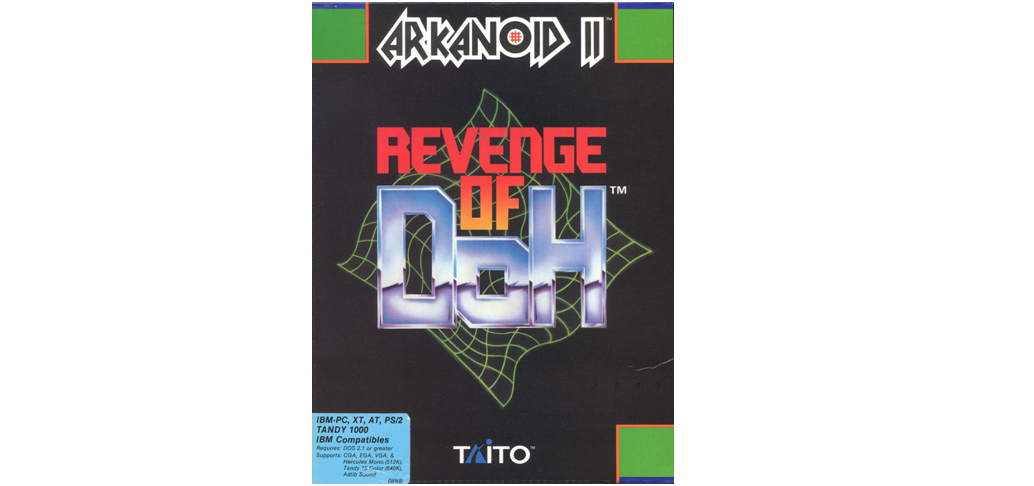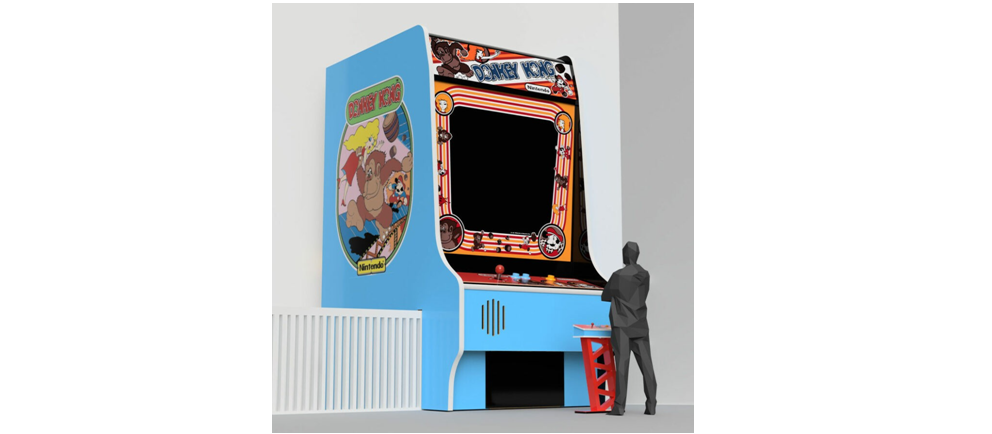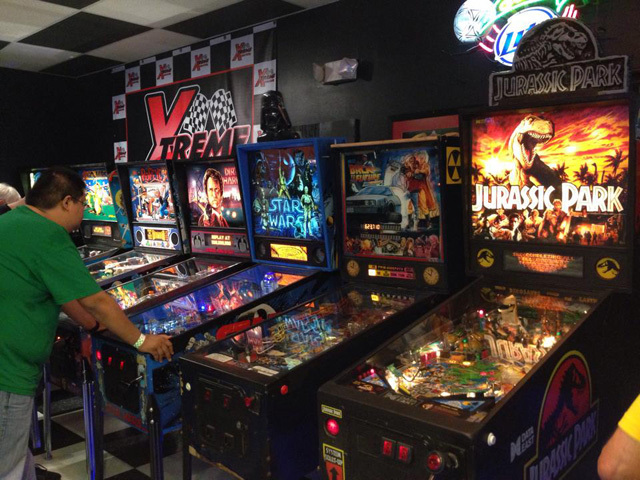We’ve covered plenty of titles in our running series where we share tips, tricks, and info about how to get good and set high scores in the popular arcade games of yore. At one point, this included Arkanoid, the 1986 block-breaker arcade game inspired by Atari’s highly popular Breakout, released 10 years prior. On that occasion, we shared lots of key information, as well as tons of strategies to help players get acquainted with the basic gameplay of this title, and to help them improve their game and set the highest possible scores. And in that same vein, today we’ve come to talk about another game in the series, this time revolving around Arkanoid: Revenge of Doh.
Also known in some platforms as Arkanoid II: Revenge of Doh, or simply Arkanoid II, this series was one of several Atari Breakout clones on the market, but one that became arguably more popular than Atari’s 1976 smash-hit. Released just one year after the original Arkanoid, Revenge of Doh offers more of the same brick-breaking, power-up-picking, and ball bouncing goodness from the original, but with a new premise consisting of the main big bad from the original, Doh, coming back and wanting to get back at the Vaus. This time, you’ll be fighting for your life as you pilot the Vaus space vessel once again and try to eliminate Doh for good!
Of course, the premise of these games is mostly just to give a bit of context to the gameplay. And while this concept does nothing too original, especially for today’s standards, Revenge of Doh does have some unique mechanics that set it apart from the rest. Some of these innovations include the addition of Warp Gates at the end of every level, which when used, will determine the layout of the next level. Moreover, there are also new notched silver bricks that regenerate after being destroyed. And finally, there are also some blocks that move horizontally as long as their paths aren’t blocked by other bricks, making them harder to destroy.
Gameplay Basics
Just like its predecessors, the controls in Arkanoid: Revenge of Doh are as simple as always: The player has a paddle to control the Vaus, which can only move left or right; a button with which the player can shoot lasers when the appropriate power-up is picked up, and a set of buttons to determine whether the player is starting a 1P or 2P game.
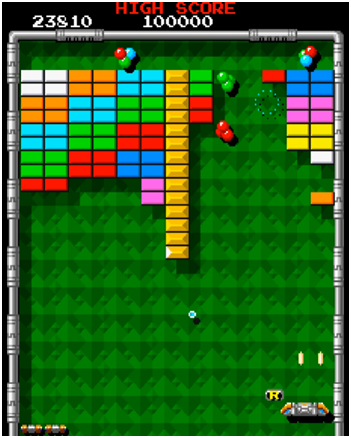
Like before, the objective is to use the Vaus to bounce a ball upwards at a series of bricks, which take a varying number of hits to destroy. A stage is completed once every applicable brick is destroyed. And to aid in this endeavor, the Vaus can pick up a variety of powerups, which are sometimes dropped by destroyed bricks, and which can transform the vessel in many ways. From enlarging and shrinking its length, to enabling it to shoot lasers at the bricks, or even cloning it or temporarily making it leave a trail of reflective beams in its wake, there are many ways to upgrade the Vaus in Revenge of Doh.
Power-Ups
Speaking of which, here is a list of all the powerups that you’ll find in this game:
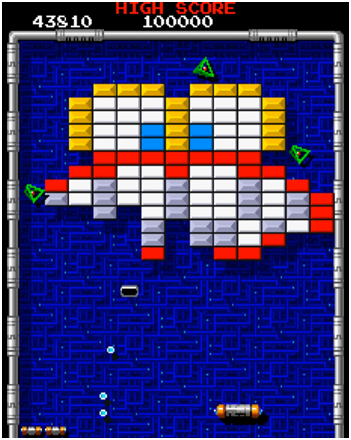
- P Capsule: Stands for “Player” capsule. Grants the user an extra life.
- C Capsule: Stands for “Catch” capsule. It makes the ball stick to the Vaus, and the player can press the Fire button to manually release it.
- L Capsule: Stands for “Laser” capsule. Transforms the Vaus so that it can shoot lasers. These lasers can destroy all regular bricks except the golden variants.
- B Capsule: Stands for “Breakout” capsule. Creates two portals that can be used to progress to the next stage. Also grants an instant 10,000 points on use.
- D Capsule: Stands for “Disruption” capsule. Splits the ball into 8 instances that can all be kept in play. The player gets no penalties from extra balls falling off the screen, as long as at least one is kept in play.
- R Capsule: Stands for “Reduce” capsule. Shrinks the length of the Vaus, making this a power-down item of sorts. However, while the Vaus is diminished, all point scores are doubled. This effect is removed when any other capsule is picked up.
- I Capsule: Stands for “Illusion” capsule. Makes the Vaus leave a physical trail in its path, which can bounce the ball freely. The speed of the Vaus determines the maximum length of the trail, with a faster Vaus being able to leave a longer trail.
- T Capsule: Stands for “Twin” capsule. Creates a clone of the Vaus that moves closely beside the original.
- N Capsule: Stands for “New Disruption” capsule. Splits the balls into three instances that constantly regenerate infinitely. Once a ball falls down off the screen, another ball will be created from the other existing units in play. This power-up is removed by picking up any other capsule.
- M Capsule: Stands for “Mega” capsule. Supercharges the ball so it can go clean through any number of bricks without rebounding until it hits a wall. This power-up can be removed prematurely by picking up any other capsule, even as the ball is powering through bricks.
- S Capsule: Stands for “Slow” capsule. Reduces the speed of the ball, which is gradually recovered as it bounces on the Vaus or on bricks. This power-up can be stacked, further reducing the speed of the ball, up until it’s at a near-standstill.
- E Capsule: Stands for “Enlarge” capsule. Extends the length of the Vaus significantly. Curiously enough, we don’t know if it’s a joke by the developers or something, but they gave this capsule a blue coloring. Take that as you will.
- Golden Capsule: When picked up, any of the following 5 effects can be activated at random:
-
- Splits the ball into 40 instances,
- Splits the ball into 25 supercharged instances,
- Splits the ball into 8 regenerating instances,
- Gives the Vaus the “Laser” power-up and makes it fire continuously, or
- Spawns 15 regenerating enemies on the stage, significantly complicating matters for the player.
Tips and Tricks
As with any other Arkanoid games, there really aren’t any shortcuts to getting good, though knowing what to expect from any of the power-ups can give you an idea of how to use them best. Revenge of Doh, however, has the particularity of their stages having two possible layouts each, with the exception of the two boss stages.
Whenever you beat a stage, you’ll be given a choice of path before proceeding. Depending on what you choose, you’ll get a different stage layout. This doesn’t affect anything in the grand scheme of things, and you can choose any side that you want at any given moment with no repercussions—it’ll simply affect the version of the next stage that you’ll get.
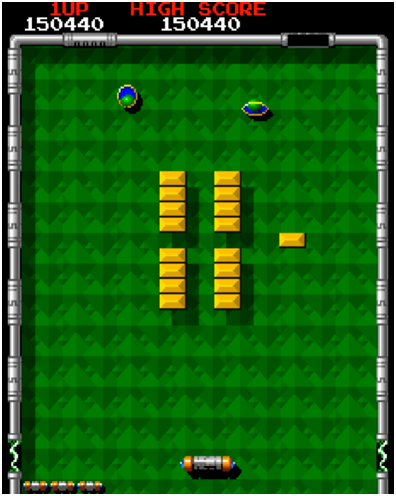
Another thing worth pointing out here is that the Vaus is basically invulnerable to the enemies. In other words, they can go through the ship freely without causing any harm. However, the ball can bounce on the enemies, possibly greatly changing its trajectory and causing you to miss your next move and losing a life.
Similar to its predecessors, the same strategies that worked for the other Arkanoid games are valid here. Namely, the Laser power-up is completely overpowered and you should get it whenever you can, as it will let you essentially blast through the stages unimpeded, as long as you can keep the ball in play at the same time. Similarly, in order to cause maximum destruction, a good idea is always to focus on creating a lane down a single path, up to the roof of the stage, and launching the ball all the way back so it can get behind the bricks and cause maximum destruction by bouncing between the roof and the blocks. Be careful with this strategy, though, as it will cause the ball to speed up very, very quickly, and you’ll need to be ready for it when it eventually comes back down.
Regardless of your approach, practice will always make perfect when it comes to Arkanoid: Revenge of Doh.
Thanks for reading! Here at PrimeTime Amusements, we like to keep ahead of the curve in arcade game rental and sales and pride ourselves in providing the best service in the country. If you’re looking for a game in particular, or have a few questions about the industry, feel free to give us a call at 1.800.550.0090 or to swing by at 5300 Powerline Rd. Suite 210, Ft. Lauderdale, Florida, 33309.

